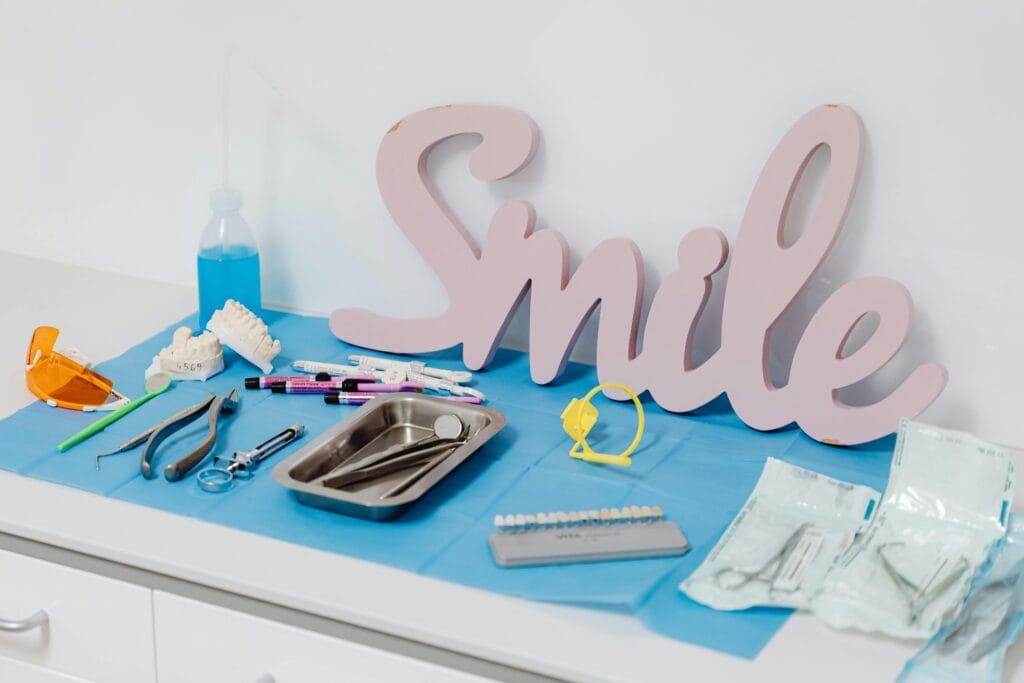FREE SHIPPING OVER $50
Hate Flossing? Dentists Recommend This Surprisingly Easy Alternative

You know the drill. It’s the moment of truth at your six-month dental checkup. Your dentist or hygienist asks, “Are you flossing regularly?” You probably give a vague, optimistic answer that’s a little less than truthful. You know you should, but the thought of painstakingly threading a string between every tooth feels like a chore—awkward, time-consuming, and let’s be honest, not always a pleasant experience. It’s the one part of your dental hygiene routine that you consistently dread.
For years, the message has been simple: brush, then floss. But what if there was an easier, more effective way? What if there was a powerful tool that could get the job done faster and more efficiently, one that your dentist would be thrilled to hear you’re using? The good news is, there is. Dentists are increasingly recommending a surprisingly easy alternative that makes the chore of interdental cleaning a thing of the past. This isn’t about giving up on your oral health; it’s about upgrading your routine with a tool that works for you.
Why We Hate Flossing: A Case of Bad Habits
The reason so many people lie to their dentist is because flossing is a genuinely difficult habit to maintain. The classic string floss is effective when used correctly, but human behavior tells a different story.
- It’s Awkward and Time-Consuming: Navigating a small piece of string into the tight spaces of your mouth, especially your molars, can be incredibly difficult. The process is often uncomfortable, leading to an inconsistent routine or giving up altogether.
- The “Gross” Factor: Seeing or smelling the plaque and food particles that are removed by floss can be a major deterrent for some, making the act feel unpleasant rather than clean.
- Perceived Ineffectiveness: For many, the bleeding that can occur when flossing is a sign that they are doing something wrong, so they stop. In reality, the bleeding is often a sign of gum disease or inflammation, and it is the very reason you need to floss more, not less.
Given these challenges, it’s no surprise that dentists are now recommending alternatives that address these common complaints and make it easier to maintain a healthy habit.
The Secret Your Dentist Actually Wants You to Know
The surprisingly easy alternative that dentists are now recommending is the water flosser, a device that uses a pressurized stream of water to clean between your teeth and below the gumline. While some people may still benefit from traditional floss, a water flosser is a game-changer for many, especially for those who find string floss difficult or ineffective.
- It’s Easier and Faster: Using a water flosser is intuitive. You simply fill the reservoir, aim the tip between your teeth and along your gumline, and let the water do the work. It takes only about a minute to complete a full mouth cleanse, compared to the much longer, more manual process of using traditional floss.
- It’s a Game-Changer for Some: For people with braces, permanent retainers, bridges, or crowns, a water flosser is a must-have. These devices can easily navigate around dental work, removing plaque and debris that traditional floss simply cannot reach.
- It’s a “Set-and-Forget” Solution: The simplicity and speed of using a water flosser make it much more likely that you’ll use it every day, which is the key to preventing plaque buildup and gum disease.
The Science Behind the Alternative: Why It’s So Effective
The reason a water flosser works so well isn’t just because it’s convenient. It’s because of a powerful scientific principle called hydrokinetic action, which refers to the combination of water pressure and pulsations.
- The Hydrokinetic Action: A water flosser uses a pressurized, pulsating stream of water to dislodge plaque and food particles. This powerful action can reach deep into the periodontal pockets and between teeth, where a toothbrush can’t go and where traditional floss can sometimes miss. The pulsations create a gentle massage that stimulates the gums, which helps to improve circulation and reduce inflammation.
- Gentler on the Gums: Unlike string floss, which can sometimes cause irritation or bleeding, a water flosser is often gentler on the gums. This can be a huge relief for people with sensitive gums or those with early signs of gum disease.
- Interdental Brushes: For those who have wider gaps between their teeth or have had gum recession, another great alternative is an interdental brush. These small brushes are designed to fit perfectly between teeth, providing a manual scrubbing action that is highly effective at removing plaque and food debris. Many dentists recommend a combination of both a water flosser and interdental brushes for comprehensive care.
Making the Switch: Your Action Plan for Better Oral Health
If you are ready to give up the shame of lying to your dentist, here is a simple action plan to switch to an alternative that actually works for you.
- How to Choose a Water Flosser: Look for a device with adjustable pressure settings. This is crucial so you can start with a lower pressure and work your way up. A large reservoir is also a plus, as it means you won’t have to refill it as often.
- How to Use It Correctly: To use a water flosser, simply aim the tip at the gumline at a 90-degree angle. Start with your back teeth and work your way around, moving the tip slowly along the gumline. Don’t worry about getting it perfect at first; just get the habit started.
- Beyond the Alternative: Remember that a water flosser is a powerful complement to, not a replacement for, brushing. You should still brush your teeth twice a day with a soft-bristle brush for two minutes each time. A great oral hygiene routine includes brushing, interdental cleaning, and regular checkups.
Why Dentists Are Now Recommending It
For years, dentists were focused on the one tool that had been proven to work: string floss. But they’ve come to a simple, practical conclusion: the best tool is the one that people will actually use.
- Compliance is Key: A dentist would much rather a patient use a water flosser every day than have string floss collecting dust in a bathroom drawer. The science shows that consistent daily use of a water flosser can be just as, if not more, effective at preventing gum disease and plaque buildup than inconsistent flossing.
- Clinical Evidence: A growing body of clinical evidence is proving the effectiveness of water flossers and interdental brushes. These tools have been shown to significantly reduce plaque and gingivitis, proving that they are a valid and effective part of a modern oral health routine.
Conclusion
The shame of dreading your next dental checkup can be a thing of the past. You don’t have to choose between a painful routine and bad oral health. The simple truth is that there are powerful, dentist-approved tools that make interdental cleaning easy, fast, and effective. By embracing a water flosser or an interdental brush, you are not just choosing a new tool; you are choosing a healthier, happier future for your smile.
Related Articles
- Yellow Teeth Gone: My 7-Day Baking Soda Trick for a Dazzling Smile!
- Stop Rinsing! Dentists Reveal Why You’re Washing Away Cavity Protection
- Dentist’s Warning: 3 Brushing “Mistakes” Silently Rotting Your Teeth (Stop Decay & Save Your Smile!)
- Ozempic SHOCKER: Forget “Face” – Experts Warn of a New, Hidden Danger Called “Ozempic Mouth”!
- URGENT WARNING: Stop Using THIS Mouthwash Now to Slash Your Bowel Cancer Risk (Surgeon’s Shocking Discovery)



